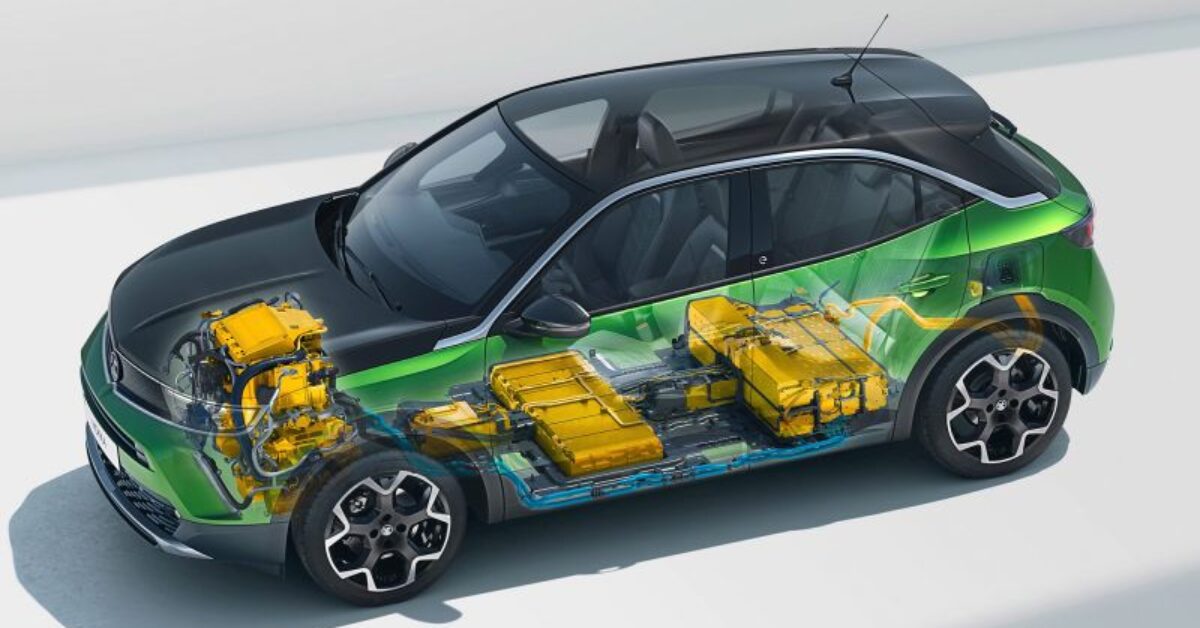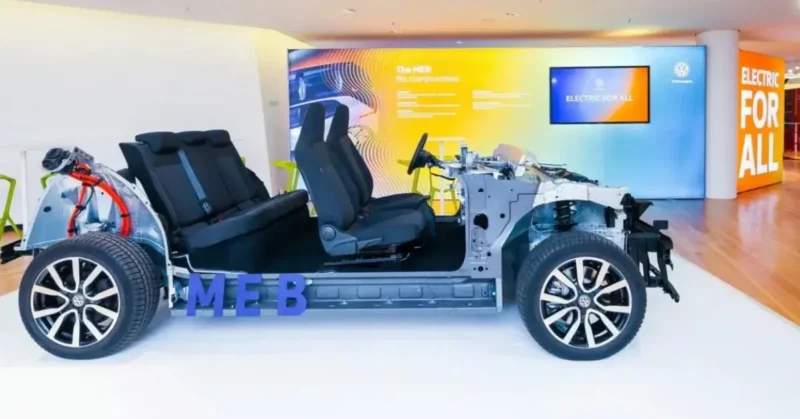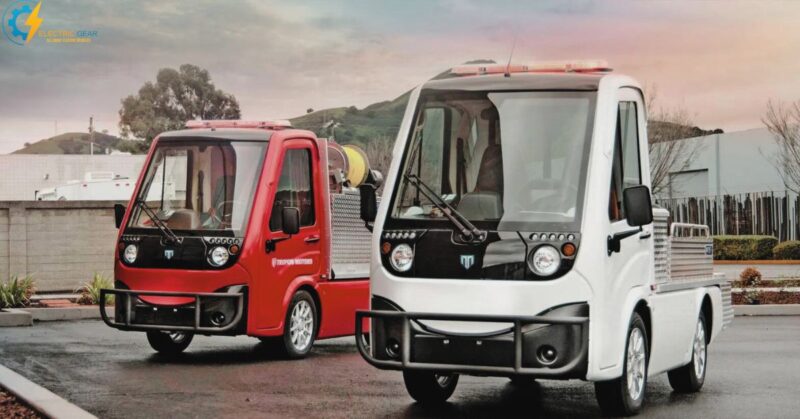Are you curious about electric cars and how do electric cars work? Well, you’re in the right place. Let me give you a quick rundown. (Don’t worry, I’ll be simple.)
Unlike traditional automobiles, which use a gasoline or diesel-fueled internal combustion engine to move the wheels, electric vehicles are powered by electric motors. The battery pack stores energy to power the car’s engine, which turns the car’s wheels. The car’s onboard computer regulates current delivery from the battery to the motor in response to the accelerator being depressed.
How do Electric Cars Work
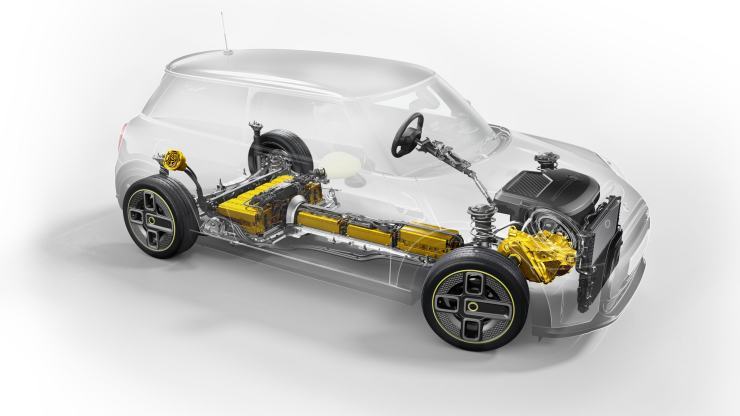
Some of the vehicle’s kinetic energy is converted back into electrical power by regenerative braking, which is then utilized to replenish the battery. So, EVs have an electric motor powered by a battery pack. When you plug the car into a charging station, the battery gets recharged, and you’re good to go again.
I know what you might think: “But what about the range? Won’t I run out of power on long trips?” Below, we have shared an in-depth guide on how do Electric Cars Work and how their engine gets powered.
The era from 2020 to 2030 is considered to be the decade of electric vehicles in which the stock is believed to be reached 350 million (the US alone will host around 190 million EVs by this date); smarter and eco-friendly electric vehicles use entirely electrical motors instead of a gasoline engine, and an electric rechargeable battery is used to run all of its other functions like AC and heater.
How Are Electric Cars Powered?
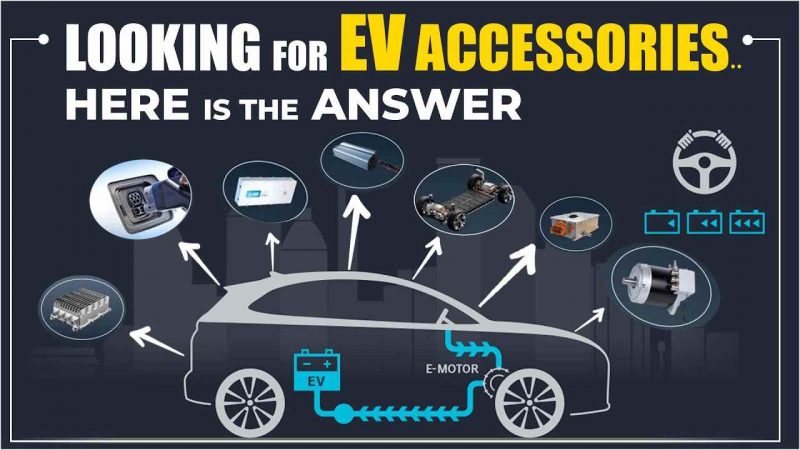
Electric cars are powered by an electric motor, which is what drives the car forward. This motor is powered by a battery pack, which stores electricity generated by the motor.
So, you might be thinking,
“Where does the electricity come from?”
There are a few different ways to charge an electric car. One way is to plug it into a charging station, which can be found at various locations around the city. These charging stations use electricity from the grid to charge the battery pack in the car.
How Does an Electric Car Work?
Here is a brief rundown of EVs’ different features, components, and parts to familiarize you with how an electric car works.
A gasoline-powered engine replaces the electric motor in an EV. The inverter receives the electric current from the EV battery and provides power to the motor after making it more compatible with the motor.
It’s, however, unsafe to predict most of its qualities and environmental impacts. Still, these are believed to be GHGs free because it uses an electric motor instead of an engine to propel their wheels. Energy is stored in a gigantic, heavy-weight rechargeable battery that is charged by an external plug-in, and that power is later used for all its components and features to function. It is, however, beforehand to say what an EVs range would be because various consequential factors are here to determine Evs’ range.
So, now that you know a little about electric cars, let’s dive into how they work. (It’s easier than you might think!)
First, electric cars have an electric motor, which powers the vehicle. This motor is powered by a battery pack, which stores electricity generated by the engine. Pressing the accelerator pedal, the electric motor kicks into gear and propels the car forward.
It’s as simple as that! You might wonder, “What about all the other parts in a gas car, like the engine and transmission?” Well, in an electric car, those parts are replaced by something called an electric drivetrain. This drivetrain is made up of a few different components. Still, the primary function is to transmit the power from the electric motor to the car’s wheels.
So, an electric car is quite different from a traditional gas car. But that’s a good thing! Electric cars are more efficient, environmentally friendly, and cheaper to maintain. Plus, they’re just plain fun to drive! So, if you’re ready to switch to an electric car, go for it! You won’t be disappointed.
Electric Vehicle Technology
Skyrocketing gasoline prices and environmental concerns are the primary motives behind the electric revolution. EVs worldwide are expected to expand more rapidly than ever, and most gas-powered vehicle manufacturers are seriously considering manufacturing EVs.
EVs use the electric motor, just like the explosive combustion engine in a conventional vehicle, for its primary function is to power its wheels and have no fuel-related components. They emit no CO2 gases, and the battery is re-charged and can’t be charged internally like a hybrid vehicle to perform all its other functions.
EVs usually don’t use transmission, and gear-except for some rare cases; the use of oil is no more(except for some essential liquids)
EV manufacturing costs are declining with every passing day, and the charging infrastructure is improving; more Americans are going electric due to risks associated with fuel costs or environment-related apprehensions.
The Basics of Electric Cars
Unlike typical ICEs, which convert gasoline energy into kinetic energy to run, electric vehicles, in no case, require explosive combustion to generate energy. Instead, they convert purely electric battery power into kinetic energy to produce power. Electric motors supply power to the wheels through a drivetrain.
Electric Vehicle Battery Technology
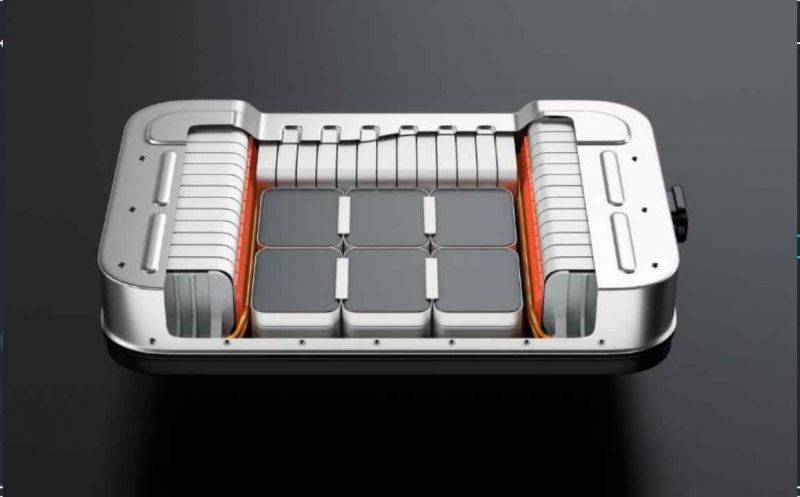
EV battery packs are resilient and heavier. These are centered in the vehicle and are the focus of all EV performances. They are made of thousands of Lithium-ion compacted cells with electrons to manage to charge and discharge. Along with some metals, copper, aluminum, and iron, some rare and expensive materials like manganese and cobalt are also used to get maximum mileage from the battery.
EV batteries are of two types
1. Lithium-ion Batteries (Li-ion)
2. Nickel-Metal Hydride Batteries (NiMH)
Lithium-ion batteries are used in EVs because they are assumed to be much more efficient, lighter, and charged faster than other types. It is just like our smartphone batteries which are the smallest in size and take days to discharge. These batteries hold more energy density, are considered cheaper to maintain, and have longer life spans.
However, they are costly, less durable, non-resistant to heat, and require a cooling system to perform to their optimal level. NiMH batteries are best suited to hybrid vehicles as they are almost 40% less efficient than Lithium-ion batteries.
These batteries lose range over time, just like our mobile phones do. Battery charging and discharging is called the charging cycle, and every battery has a limited number of charging cycles; as the countdown of these cycles starts, the battery starts losing its range, the same way our mobile phone battery loses range over time.
EV batteries are heavier, and according to a report, every cubic foot of Lithium-ion weighs around 333 pounds or 151 kg. Some EV battery weights may be up to 2923 for GMC Hummer; however, the average battery weight can be about 1000 pounds (450 kg).
Electric Vehicle Motor
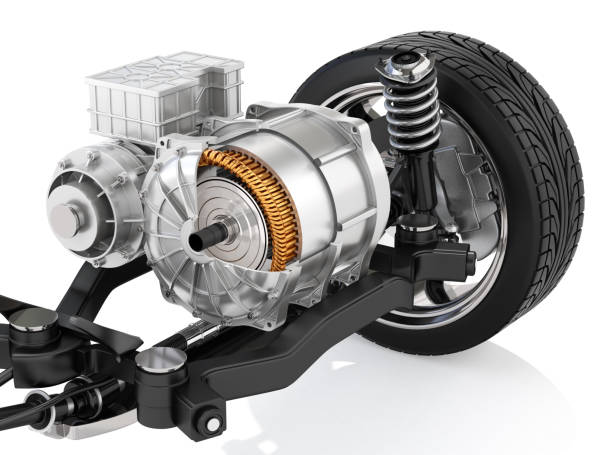
An EV’s motor is all-electric, using either AC or DC from the battery. Most EVs generally use AC motors. The motor is comprised of two parts. The stator is the static part of the motor and remains affixed to the vehicle’s chassis. The rotor is the moving part of the motor and acts much the way a crankshaft does in an ICE vehicle.
All EV motors use a 3-phase current with a converter to make the current compatible with the motor. These motors are of three types.
The Art of Charging
Different charging systems are available to charge the battery upon which the entire EV system depends. The EV industry is fast growing in countries like the USA, Canada, China, and U.k. These are the forerunner and pioneers of innovation in EVs. Installing different levels of EV chargers can benefit from both EV sales and charging station business standpoints.
Fast charging infrastructure is essential to boost the EV industry, and different levels of charging facilities are being installed worldwide. Let’s look at them in detail.
Do Electric Cars Have Engines and How They Work?
An electric vehicle (EV) engine, also known as an electric motor, is a type of electric machine that converts electrical energy into mechanical energy. The electric motor in an EV works by using the force of magnetism to create motion. It consists of two main parts: the stator, the stationary part of the motor, and the rotor, the rotating part of the motor.
Knowing about the principles of electromagnetism helps us understand how an EV engine works. When an electric current passes through a conductor, it generates a magnetic field. The magnetic field can create movement by arranging the conductor in a particular way. This is how an electric motor works.
The stator of an EV engine is typically made up of a series of copper wire windings arranged in a specific pattern to create a magnetic field. The rotor is typically a permanent magnet surrounded by the stator. When an electric current is applied to the stator, it creates a magnetic field that interacts with the rotor’s magnetic field. This interaction causes the rotor to rotate, which in turn powers the wheels of the EV.
EV engines are highly efficient, converting much of their electrical energy into practical work. They also produce zero emissions, making them an attractive option for sustainable transportation.
Do Electric Cars Have Gears?

Most electric cars do not have gears in the traditional sense. Instead of a manual or automatic transmission, electric vehicles use a single-speed transmission, which is a type of transmission that only has one gear ratio.
The lack of gears in electric cars is due to the way electric motors generate torque, which is the rotational force that drives the wheels of a vehicle. Unlike internal combustion engines, which create torque over a wide range of engine speeds, electric motors generate maximum torque almost immediately when they are started. Electric cars do not need gears to change the motor’s torque output, as it can be adjusted electronically using the accelerator pedal.
However, some electric cars do use a form of gear reduction to increase the overall torque output of the motor. It is typically done using a gearbox or a set of planetary gears, which are used to multiply the motor’s torque output.
Do EVs Need Any Lubricant?
Electric vehicles (EVs) do not require traditional lubricants, such as motor oil, to function correctly. EVs do not have the internal combustion engine and other mechanical components that require lubrication in a gasoline-powered vehicle.
Instead of using motor oil, EVs rely on other lubricants to ensure smooth operation and prevent wear and tear of their components. These lubricants are typically used on the electric motor, the drivetrain, and other mechanical parts, such as the brakes and suspension.
Some common lubricants used in EVs include grease, used to lubricate bearings and other moving parts; hydraulic fluid used to lubricate the hydraulic systems in the vehicle; and transmission fluid, used to lubricate the transmission and other components in the drivetrain.
How long Does it Take to Charge an Electric Car?
Different under-given chargers are used for charging an EV
Level 3 DC Fast Charger

Superfast chargers come with the capacity to deliver power from 24-300 kW and usually take one hour to charge 75-1,200 miles. It has a fast capacity to charge a 60-kWh in less than 30- 40 minutes.
Level 3 DC Fast Chargers are installed using high-voltage transmission lines, and various safety risks are associated. So, it cannot be installed at home easily. It is mainly used for commercial vehicles or in any public access areas, and only EVs with fast charging capability can be charged with this type of charger.
Level 2 Charger
It takes more time than the Level 3 Charger and provides the power of 3.9-19.2 kW for charging 12-80 miles per hour. These are more frequent than the two other charging types and have the power to charge a 60-kWh EV battery in 2.5-4.5 hours.
Level 1 Charger
The slowest of all chargers is Level 1 and is provided with the EV. It was the first to be introduced. Its charging speed and lack of charging infrastructure hinder the booming EV industry because some people are reluctant to go electric lest an EV will not charge soon to take them to their destination.
It charges a 60-kWh battery in 30-40 hours with a 1-1.4 kW power capacity for charging 3-5 miles per hour.
How long do electric cars last?
The lifespan of an electric vehicle is highly dependent on its design, construction quality, and maintenance schedule. Yet, owing to their simpler design and fewer moving parts, electric vehicles are forecasted to have a longer lifespan than their gasoline-powered counterparts.
One of the essential factors in determining how long an electric vehicle will last is the battery it uses. Most current electric vehicles utilize lithium-ion batteries, which have a lifetime of 8 to 10 years or 100,000 to 200,000 miles before needing to be replaced. Some battery makers, however, claim that their products can go up to 500,000 miles on a single charge, thanks to recent developments in battery technology.
It is important to remember that variables such as high heat or cold, how often the battery is charged, and how deeply it is discharged may shorten the battery’s life in an electric vehicle. Keeping up with routine battery maintenance and charging can help the electric vehicle last for years longer.
What are the four types of electric vehicles?

- BEV means battery electric cars that essentially use battery power to run their motor and all other functions. The battery is charged by an external plug-in, receiving electricity directly from the grid.
- Hybrid vehicles (HEV) use gasoline-engine and batteries for all their performances. You can switch to the engine or battery by changing the driving mode push button. No external source is used for charging, and it is done through the regenerative braking of the EV. Gasoline is the only source of its energy.
- Like HEVs, plug-in Hybrids (PHEV) also use both energy sources, an internal combustion engine, and an electric motor. The only difference is that a plug-in hybrid can be charged through a plug into an electricity source.
- Hydrogen fuel cell vehicles are believed to be environmentally friendly; however, they are not the most common.
What are the inner parts of an EV?
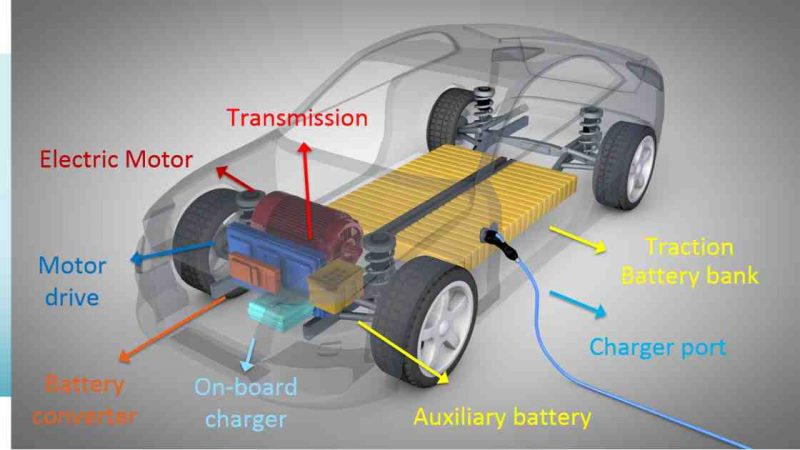
As against ICEs, EVs possess almost 90% fewer moving parts. Let’s look at the breakdown of the internal parts of an EV.
- Electric Motor: It is responsible for providing power to the electric vehicle. It can be of either AC or DC; however, AC motors are generally used.
- Inverter: It takes the electric current from the battery and supplies it to the motor after making it compatible.
- The focus of all power, the battery, lies at the bottom of an EV. All the energy is derived from the battery for its motor and other components.
- Transmission: Electrical vehicles do not have multi-speed transmissions. They use single-speed gear except for the Porche Taycan, an all-wheel drive car with two-speed transmission only in the rear wheels.
FAQs:
How long do electric car batteries last?
Electric car batteries typically last for around 8 to 10 years, depending on how well they are maintained and how they are used. Factors such as driving habits, climate, and charging practices can all affect the lifespan of an electric car battery.
What are the downsides of electric cars?
Some potential downsides of electric cars include their upfront costs, limited range compared to gasoline-powered vehicles, and the need for charging infrastructure. Electric cars may also have longer charging times and require specialized maintenance.
How much does it cost to install an EV charger at home?
The cost of installing an electric vehicle (EV) charger at home can vary widely depending on several factors, including the type of charger, location, and any necessary electrical upgrades. On average, installing an EV charger at home ranges from $500 to $1,500, with most installations falling in the $700 to $1,000 range.
Conclusion:
In conclusion, electric cars offer several benefits, including reduced fuel costs, lower maintenance costs, and reduced environmental impact. However, they may have a higher upfront cost and require access to charging infrastructure. Potential electric car buyers must consider their driving needs and budget when deciding whether an electric car is suitable.

Imran is an experienced content writer who crafts engaging and informative articles for a variety of industries. With a keen eye for detail and a passion for storytelling, Imran delivers high-quality content that resonates with readers. Whether he’s writing blog posts, social media content, or website copy, Imran is committed to delivering compelling content that drives results.

